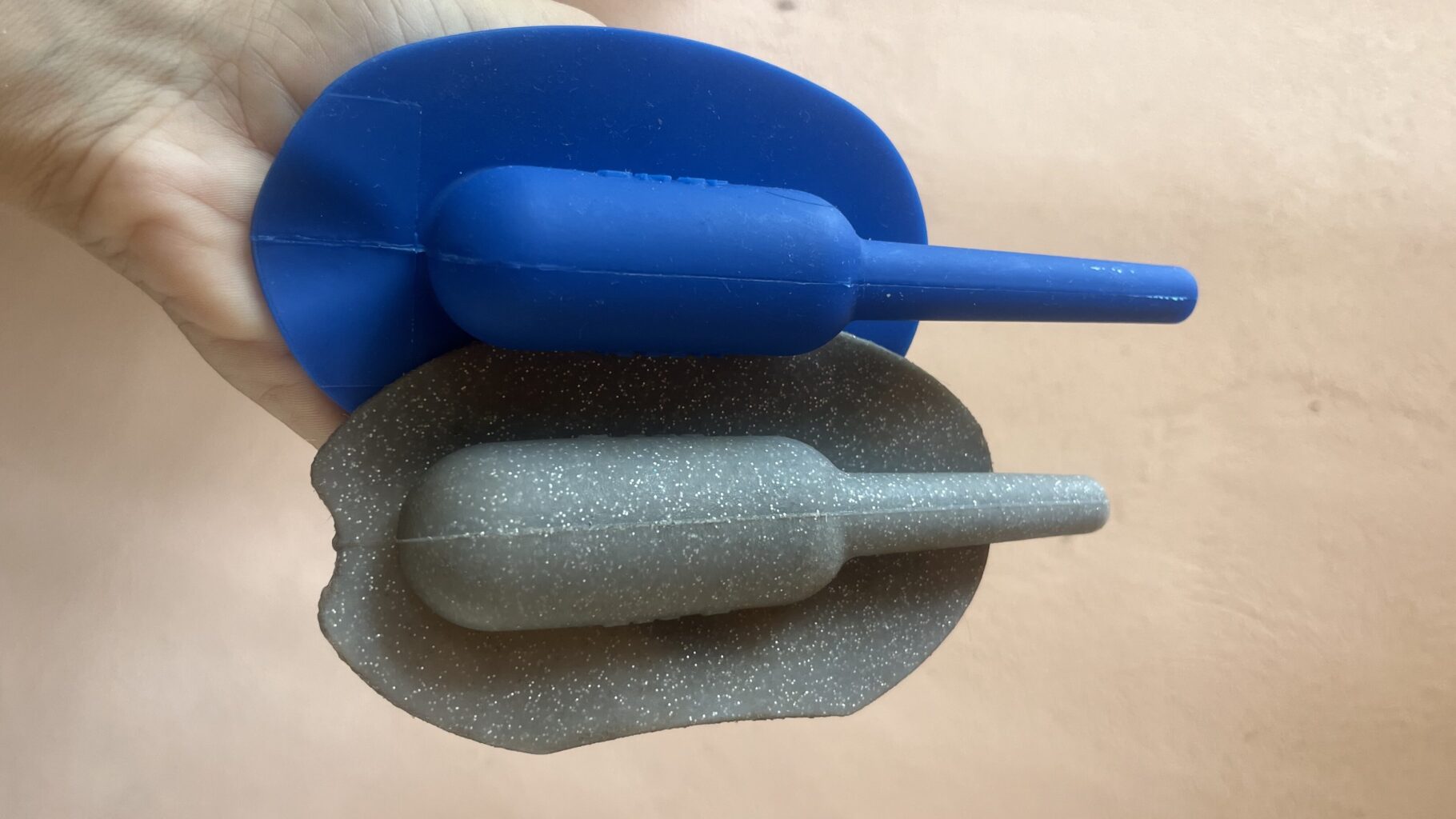If you’re a female diver using a dry suit, you have probably heard about the She-P. If you’re a guy diving with ladies in dry suits, you have too.
The She-P is THE go-to urination management device for female divers, even if diapers are still a solution used widely, they have taken a backseat since the She-P came into the market.
The She-P provides a solution for women that not only enables us to conduct long dives comfortably while staying properly hydrated prior to the immersion, but also reduces our environmental footprint compared to using nappies. I, personally, do not like the idea of creating such waste on a regular basis, I also find nappies really uncomfortable and sometimes ineffective as they have a limited amount of absorption and can create rashes and other skin conditions.
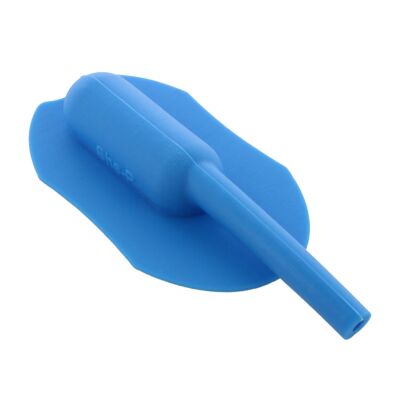
The She-P is hand made in The Netherlands by a female entrepreneur and technical diver who noticed the lack of options for females in the industry compared to men’s easy resources when it comes to plugging a pee valve. The She-P was invented in 2006 and was originally made of latex. Through experimentation and diver feedback, the design changed to silicone.
Today, the She-P is used in aeronautics, skydiving and other extreme sports where ladies need urination management solutions to better enjoy the activities without sacrificing hydration.
The Divine Secrets of the She-P Sisterhood is a Facebook group where almost three thousand female divers share knowledge and tips on the use of the She-P as well as different methods to install it, adhesive suggestions, etc. It is not only about the product but the collective knowledge that comes with decades of trial and error.
Recently, I had an emergency as my primary She-P tore after many years of use. I own a backup She-P too because I teach and cannot go without it during a normal training day, it would simply not be possible. This time, I wasn’t able to find a replacement for my primary She-P locally but another brand of a VERY similar device came up in my social media feed. The Dive-P. I wasn’t able to find a website related to the product, other than the different online shops who sell it.
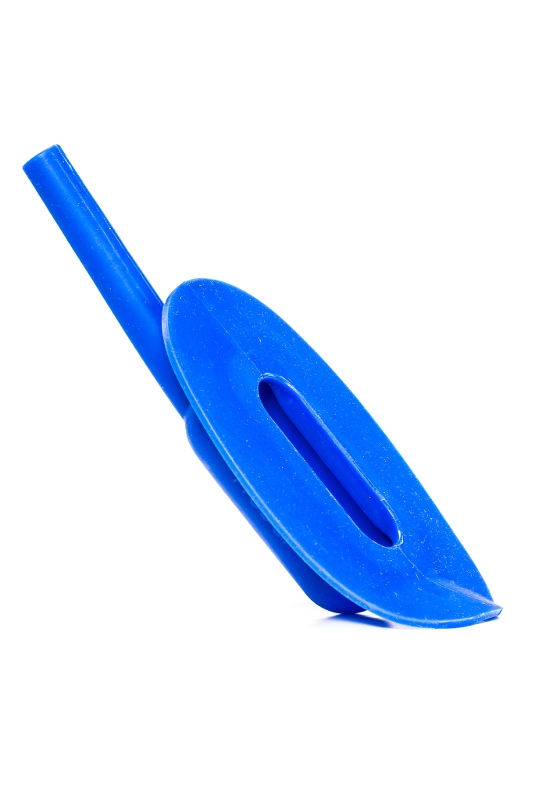
I must say my first reaction was rejection. I appreciate a lot the initiative of the She-P creator and will be forever grateful to her, for allowing all of us to dive and pee comfortably in our dry suits, almost as easy as a guy does. The Dive-P device seemed to be a mere copy from Heser, who potentially improved the design by taking note of the issues many of us encounter and trying to provide a solution to those problems with this very similar design. Since writing this article, I have also learnt that the Heser device is not new, it has been in the marker for a long time in certain regions, so maybe they just scaled it to the Americas recently and that’s why I did not know about it.
Because of the circumstance and with a trip ahead where I needed to have two devices, I went ahead and got what I now jokingly call “The Faux-P”, curiosity was also eating me, could the Dive-P be as good as the She-P?, let’s say I did it for scientific research purposes.
The price of the Dive-P is definitely advantageous compared to the She-P. At the time, I wasn’t sure the price was justifiably the selling point because for me, comfort and durability are more important than price. Having no other option, I caved and shipped myself a Faux-P. I felt like I was betraying the She-P Sisterhood. God knows which spell will fall on me after this!
There are many practical differences between the two devices, I do have an opinion about it, which I am happy to share here but I will try to objectively compare both devices and describe fairly how the Dive-P is different since most of my peers are rather familiar with the She-P.
Material
The Dive-P is made of silicone as well as the She-P, however, the device walls are much thicker than the She-P and this makes it less flexible or malleable. It feels like hard plastic if you will, contrary to the She-P which has a soft touch, with a semi porous surface that is easy to spread glue on from the first application (you need to apply several layers on the Dive-P before being able to use it as the super smooth texture of the material rejects creating an even layer of glue at first).
The fact that it’s more rigid makes it less adaptable to body shape as well, that is clearly an advantage of the She-P, the material is high quality and soft. I won’t go as far as saying that it’s unnoticeable once installed, but it is definitely adaptable to the body shape, which the Dive-P is not. It glues really well, but it doesn’t adapt to the body as well as the She-P.
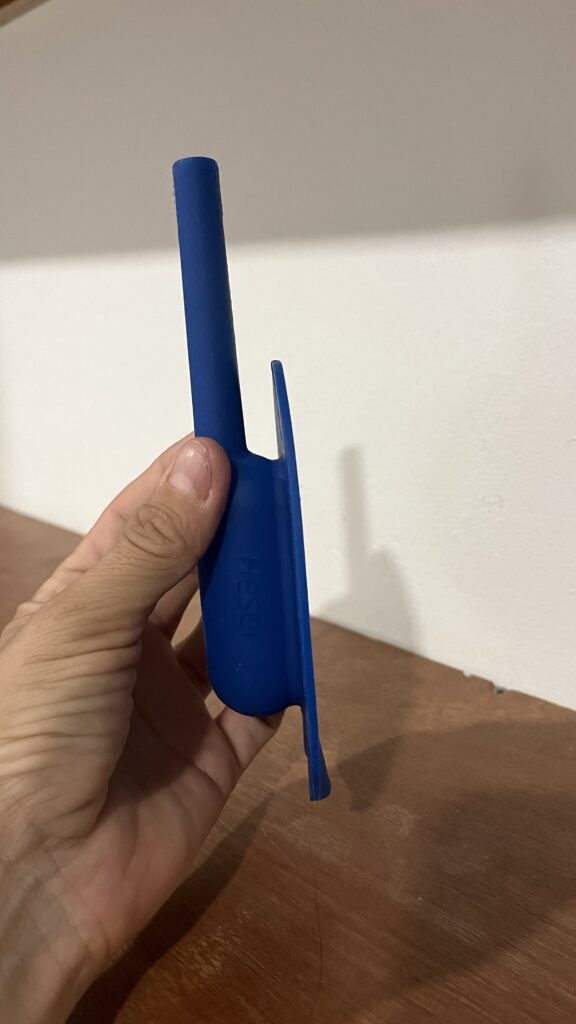
Because the material is thicker, the tube that comes out of the reservoir does not collapse or does not get pressed by the clothes or harness, in other words, it does not kink. This is maybe a plus point for the Dive-P, it is unlikely to block or bend the tube since its rather rigid.
Shape
The shape is almost exactly the same as the She-P Classic but can allegedly be cut to modify its shape, I would not dare to cut the device and damage it, though.
The reservoir of the Dive-P is smaller than that of the She-P, but the tube is longer. Overall I did not find the size of the reservoir made a big difference in the usability.
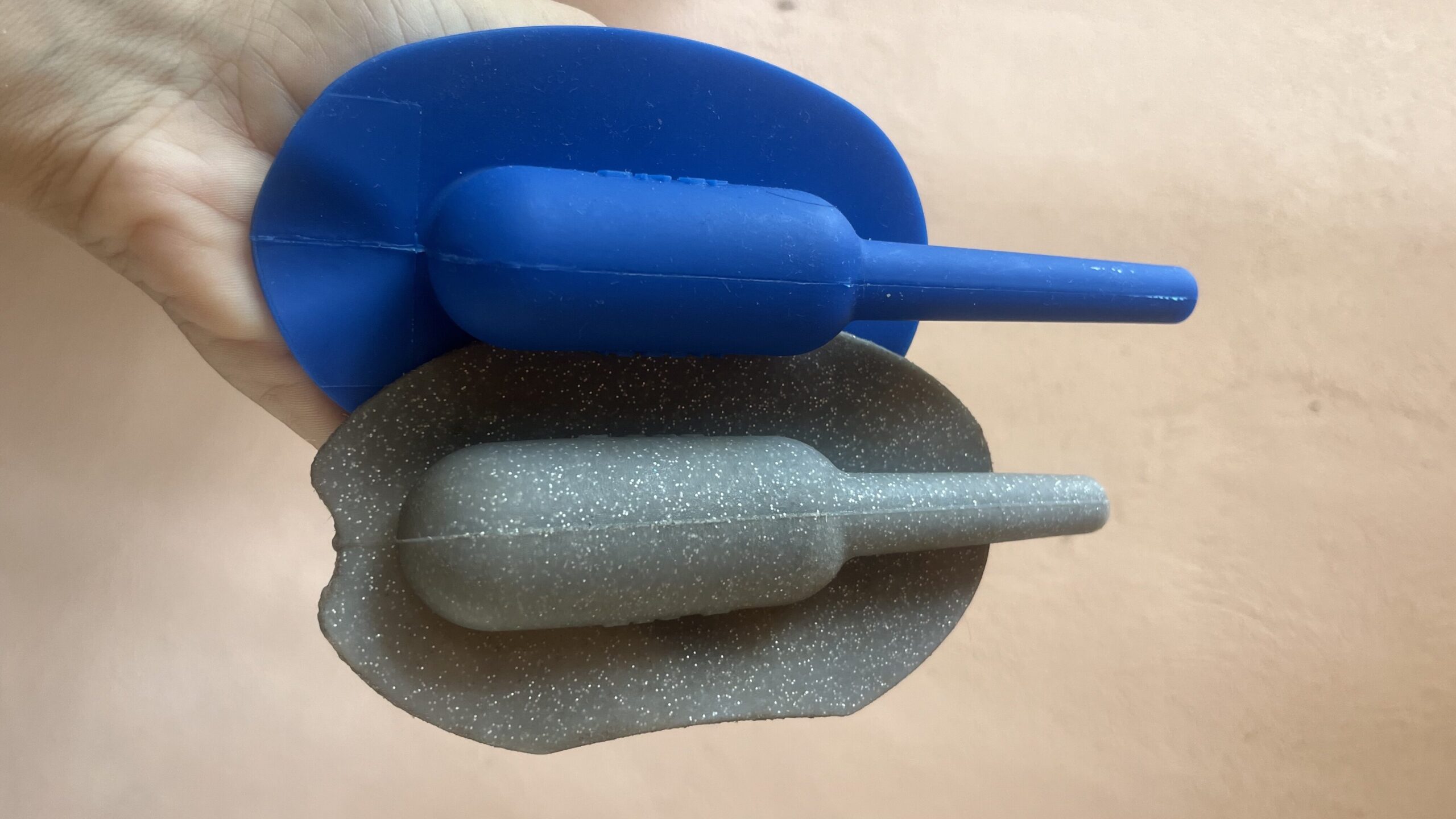
The most distinctive feature of the Dive-P is what they call “the little hill” which is a protrusion on the far back of the device, that apparently adapts to the shape of the rear end of the perineum, which is where reportedly a lot of girls have fitting and gluing problems. The She-P presents instead, a cut in the same area that helps prevent gluing the device too far back, impeding other bodily functions. It seems to me like you can’t have it all and choices must be made!
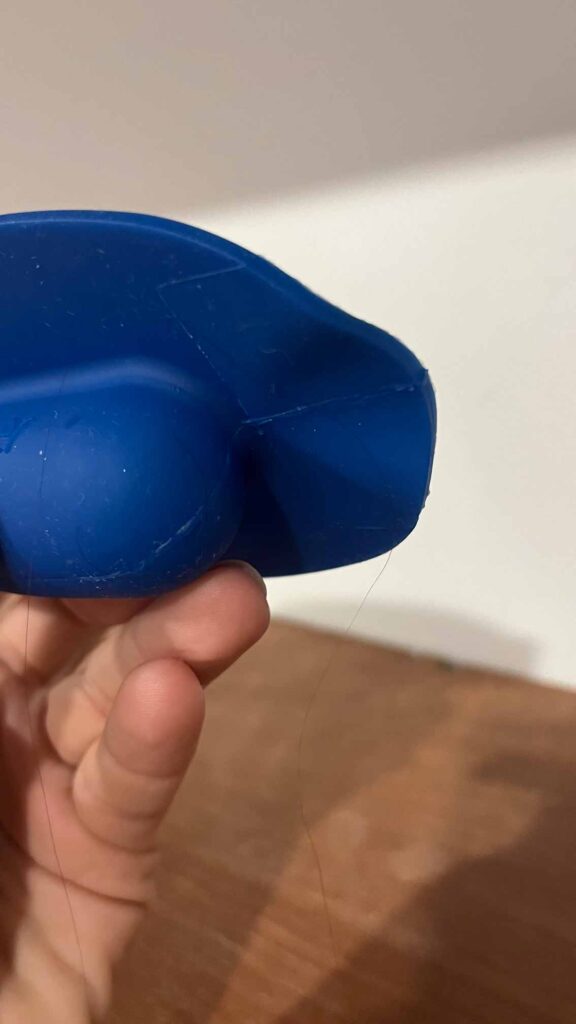
Comfort and ergonomy
Because of its rigid material, the Dive-P glues to the body but does not allow for a lot of movement, once it’s glued, the device remains stiff and it is very noticeable. The thickness of the material, particularly the edge that binds the reservoir to the skirt (where glue is applied) can be tough on the delicate skin giving a “cutting” sensation and particularly when having pressure balance issues (aka squeeze) this proved to be way more problematic than using the original She-P. I do believe that the malleability of the material on the She-P makes for a less harsh experience. it is pretty awkward to realize how knowledgeable I have become on this subject and how much experienceI have gathered from many different scenarios.
The last observation I have in this comparison, is that when a problem in terms of leaking occurs, the She-P tends to happen where the device slightly unglues itself from the skin, quite often a small surface that allows a bit of leaking. On the Dive-P, because the device is way more rigid, when a portion of it becomes unglued, almost all of the device peels off creating no possibility to control the leak or having only a partial leak, and it becomes quickly and immediately a full leak scenario. How often do we have leaks depends on how well we know the device, how much we dive, how much time we have to install it and wether we have a proper toilet or dressing room to do so (compared to doing it behind a truck in the jungle!!).
Conclusion
While new products offer new features sometimes, I do feel that there is a considerable compromise in comfort here. While price is a big aspect of a decision, using a device on a regular basis and being more comfortable in the long run may be worth the several times more the price of the cheaper device. My She-P has been used almost daily since 2021 and while I knew I would eventually have to replace it, I certainly did not expect that I’d be able to use it more than three years before doing so this is what I call a good investment and getting a bang for the buck. Compared to the expense in diapers it is also pretty conveniently priced in the long run.

Will I continue using the She-P or the Dive-P?
I am a much bigger fan of the She-P overall even if one or two features of the Dive-P are interesting and work well. I do see it more like a backup device because of the lack in comfort and the amount of time I need to wear it across long training periods. In my case, comfort is worth the extra cost and its for sure amortized since the quality of the product ensures a few years in service if you take proper care of it .

